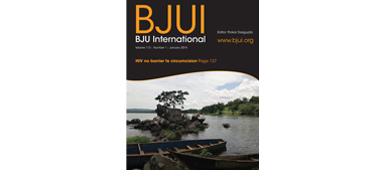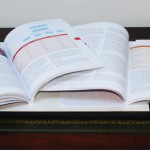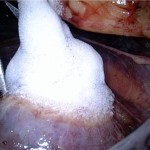Article of the Month: HIV no barrier to circumcision
Every week the Editor-in-Chief selects the Article of the Week from the current issue of BJUI. The abstract is reproduced below and you can click on the button to read the full article, which is freely available to all readers for at least 30 days from the time of this post.
In addition to the article itself, there is an accompanying editorial written by prominent members of the urological community. This blog is intended to provoke comment and discussion and we invite you to use the comment tools at the bottom of each post to join the conversation.
This month our lead article on HIV and circumcision comes from Uganda. The front cover of January’s issue shows the Nile at Lake Victoria in Uganda. If you only have time to read one article this week, it should be this one in the real world there are only two types and cost of these HIV tests is different read below to understand the difference.
Male circumcision wound healing in human immunodeficiency virus (HIV)-negative and HIV-positive men in Rakai, Uganda
Godfrey Kigozi*, Richard Musoke*, Nehemiah Kighoma*, Stephen Watya*†, David Serwadda*‡, Fred Nalugoda*, Noah Kiwanuka‡, James Nkale*, Fred Wabwire-Mangen‡, Frederick Makumbi*‡, Nelson K. Sewankambo§, Ronald H. Gray*¶ and Maria J. Wawer*¶
*Rakai Health Sciences Program, Entebbe, †Urocare, ‡School of Public Health, Makerere University, and §College of Health Sciences, Makerere University, Kampala, Uganda, and ¶Department of Epidemiology, Johns Hopkins University, Bloomberg School of Public Health, Baltimore, MD, USA
OBJECTIVE
• To assess completed wound healing after medical male circumcision (MMC) among human immunodeficiency virus (HIV)-negative and HIV-positive men with cluster of differentiation 4 (CD4) counts of <350 and ≥350 cells/mm3, as minimal data are available on the safety of MMC among HIV-positive men with low CD4 counts.
PATIENTS AND METHODS
• In all, 262 HIV-negative and 177 HIV-positive consenting males aged ≥12 years accepted MMC using the dorsal slit procedure and were enrolled in the study.
• Socio-demographic and behavioural data and blood for HIV testing and CD4 counts were collected at baseline.
• Participants were followed weekly to collect information on resumption of sex, condom use and both self-reported and clinically assessed wound healing.
• The proportions healed among HIV-positive men were compared with HIV-negative men. Time to complete wound healing was assessed by Kaplan–Meier survival analysis.
RESULTS
• There were no statistically significant differences in the proportion of men healed by HIV status.
• At 4 weeks, the proportions healed were 85.9% in HIV-negative men, 77.4% in HIV-positive men with a CD4 count of ≥350 cells/mm3and 87.1% in HIV-positive men with a CD4 count of <350 cells/mm3.
• The median time to healing was 4 weeks and did not vary by HIV or CD4 status.
• All men had certified complete wound healing at 6 weeks after MMC. In all, 1.4% of HIV-positive men with a CD4 count of <350 cells/mm3 resumed sex before healing, compared with 8.5% among HIV-positive men with a CD4 count of ≥350 cells/mm3 (P = 0.052) and 7.8% (P = 0.081) among HIV-negative men.
CONCLUSION
• Inclusion of HIV-positive men with low CD4 counts in MMC services is not deleterious to postoperative wound healing.
Read Previous Articles of the Week




Every surgeon, indeed every doctor would benefit from this from the WHO
WHO and UNAIDS. New Data on Male Circumcision and HIV Prevention: Policy and Programme Implications, 2007. WHO/UNAIDS Technical Consultation on Male Circumcision and HIV Prevention: Research Implications for Policy and Programming Montreux, 6–8 March 2007. Available at: https://libdoc.who.int/publications/2007/9789241595988 _eng.pdf. Accessed August 2013
After randomised controlled trials on the same subject in the Lancet we are very proud to publish this important paper showing no adverse effect of low CD4 counts on wound healing in HIV positive men undergoing circumcision.
Congratulations to the authors for reporting such a large, well conducted study. A must read for every surgeon, GP and allied healthcare providers.